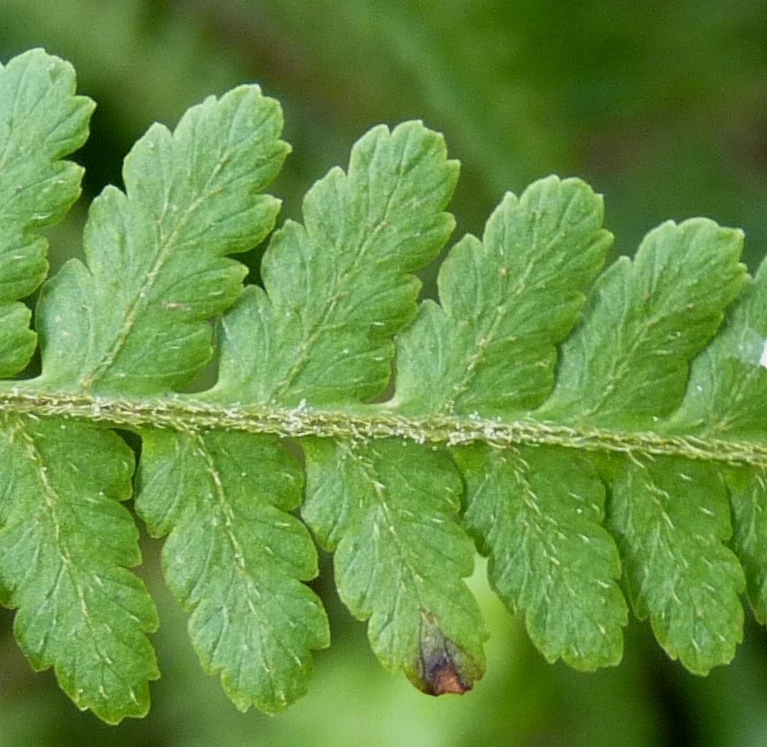Hypolepis rugosula
(Labill.) J.Sm. Ruddy Ground-fernRhizome slender, 2–4 mm diam., densely covered by shiny, chestnut-brown hairs. Fronds distant, erect but sometimes drooping towards tips, moderately harsh, 40–150 cm long. Stipe 2–5 mm diam., red-brown at base, chestnut-brown above, covered at base in red-brown hairs, sparsely hairy above, slightly shiny, rough. Lamina mostly 3-pinnate, triangular, 1–1.5 times as long as broad, mid-green to dark green; hairs on both surfaces fine, colourless or red-brown, some short and needle-shaped, others longer, curved or very crooked with pointed or glandular tips. Rachises chestnut-brown at base, yellow-brown at apex, lower surfaces rough; hairs on both surfaces like those on lamina, but also with coarser, crooked hairs having reddish cross-walls, leaving tubercles when shed. Pinnules asymmetrically oblong; bases broad decurrent, forming wing on rachis; margins shallowly serrate or deeply lobed, with lobes acute and often toothed; apices wedge-shaped to acute; veins several per lobe. Sori near sinus of a lobe or tooth, unprotected or partially protected by reflexed marginal flap which is fringed with a few hairs; spores mostly 37–40 µm long and 24–27 µm diam.
GleP, VVP, VRiv, GipP, OtP, WaP, Gold, CVU, GGr, DunT, NIS, EGL, EGU, WPro, HSF, HNF, OtR, Strz, MonT, HFE, VAlp. Also WA, SA, Qld, NSW, Tas. (including King Is. and Flinders Is.). Forms dense thickets along shady forested streams or in more open wetter areas, frequently in ditches or on embankments beside tracks.
The redness of the stipe and rachises separates this species from all but H. amaurorachis. Compared to H. amaurorachis, H. rugosula has larger fronds (which are almost as broad as long), more densely hairy lamina with frequent red-brown hairs, more finely dissected pinnae, and often acutely rather than rounded lobed pinnules. The size of the spores, probably due to the chromosome number differences between the two species, is also distinctive. It is possible that H. amaurorachis and H. rugosula hybridise in the several Victorian localities where they grow together (Brownsey & Chinnock 1987). Also see notes on hybridization under H. muelleri.
Entwisle, T.J. (1994). Ferns and allied plants (Psilophyta, Lycopodiophyta, Polypodiophyta). In: Walsh, N.G.; Entwisle, T.J., Flora of Victoria Vol. 2, Ferns and Allied Plants, Conifers and Monocotyledons, pp. 13–111. Inkata Press, Melbourne.
 Spinning
Spinning



